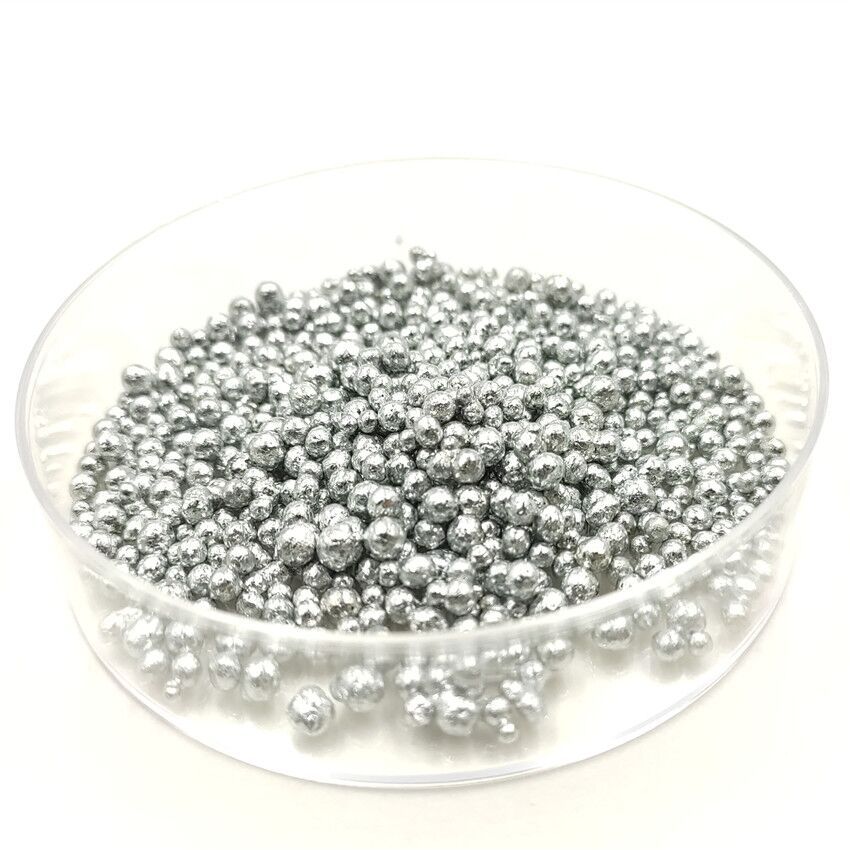Open here for our page navigation
Antimony Shot, Sb
99.999% pure
Antimony Applications and Uses:
Antimony is widely utilized as a hardening alloy for lead, particularly in storage batteries and cable sheaths. It is also found in bearing metals, type metals, solder, collapsible tubes, foil, sheets, pipes, and semiconductor technology.
Primary Use in Flame Retardants:
The most significant application of antimony in the United States is in flame-retardant chemicals used to impregnate plastics, textiles, rubber, and other materials for fireproofing. This is federally mandated for certain children's clothing. Over half of the annual U.S. consumption of antimony goes into manufacturing flame retardants.
Antimony Alloys:
A portion of U.S. consumption is dedicated to antimony alloys:
- Lead-Alloyed Antimony: Strengthens lead for use in lead-acid batteries.
- Babbitt Metal (Antimony, tin, copper, and sometimes lead): Used for machine bearings due to its soft, slippery properties.
- Pewter Alloys (Antimony and tin): Common in decorative items such as plates, pitchers, and cups.
Declining Use in Printing:
Previously, antimony played a crucial role in type metal used for printing newspapers and magazines. One of its unique properties is expansion upon freezing, ensuring precise mold filling for sharp print type. However, with the rise of computer-based printing, this application has significantly declined.
Additional Uses:
- Pigments: Antimony oxide, a brilliant yellow pigment, is incorporated into plastics, paints, and rubber.
- Medicinal & Industrial: Used in medicines, fireworks, and various specialized applications.
- Semiconductors: Highly purified antimony (99.999% pure) is employed in semiconductor technology.
Typical Analysis:
Copper 0.0001% maximum
Iron 0.0001% maximum
Lead 0.00005% maximum
Magnesium 0.0002% maximum
Manganese 0.0001% maximum
Nickel 0.0001% maximum
Silicon 0.00025% maximum
Zinc 0.0001% maximum


